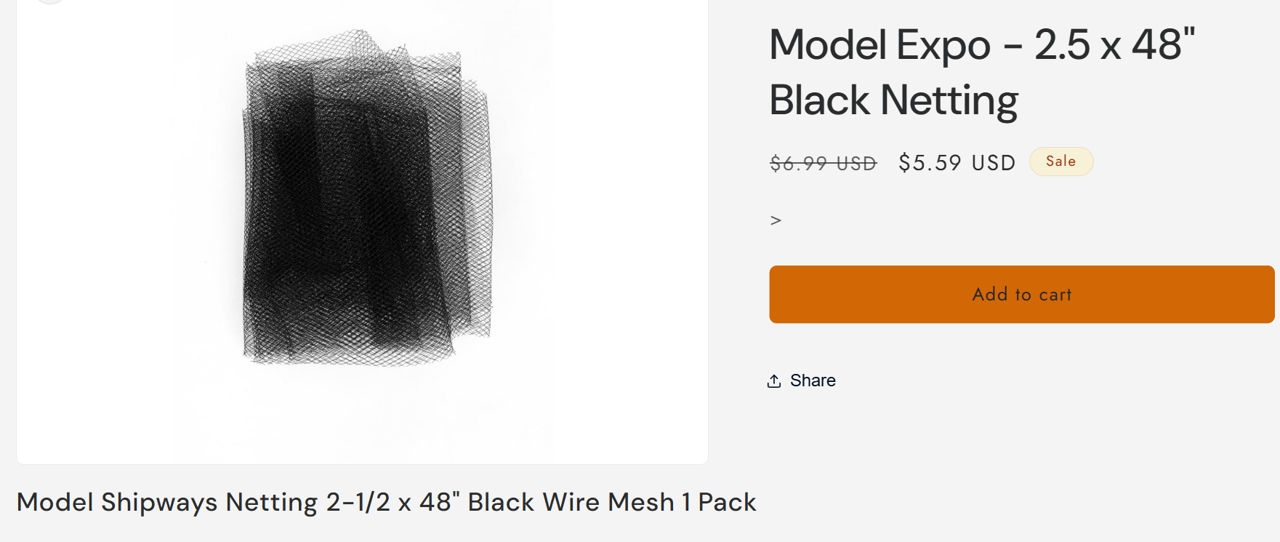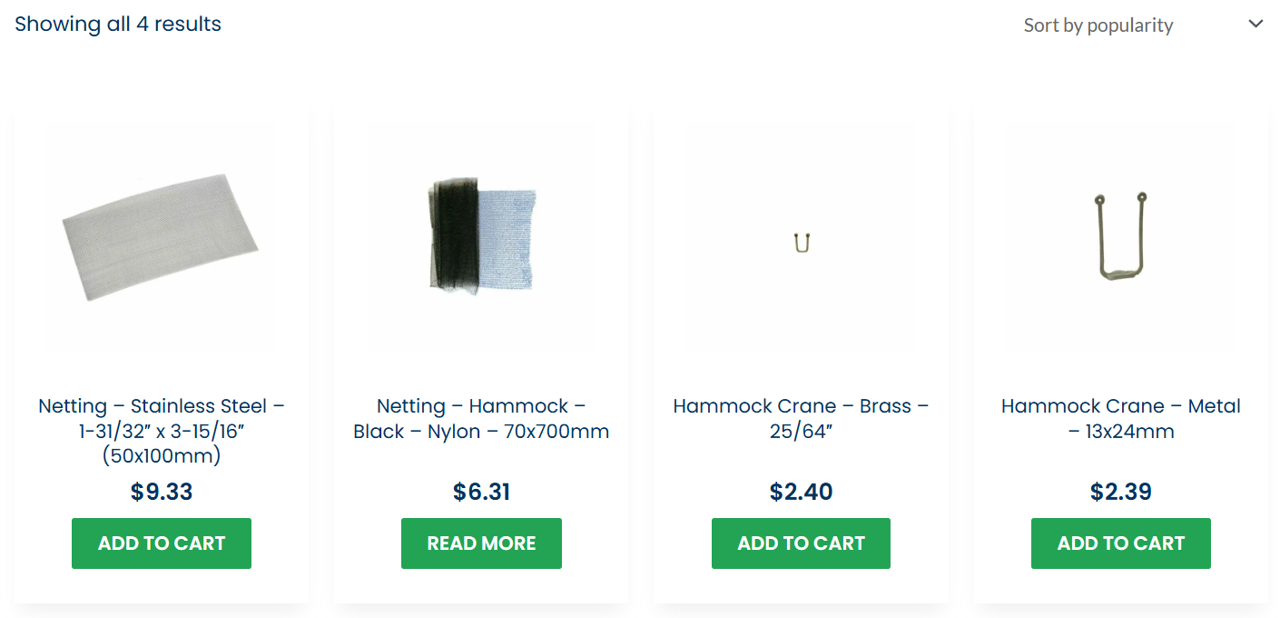-
Posts
2,611 -
Joined
-
Last visited
Content Type
Profiles
Forums
Gallery
Events
Posts posted by JSGerson
-
-
-
Very nice looking. From what I can see, the rudder will not move on your model, but then again it doesn't have to. It's a static model. I made mine moveable strictly as a challenge of my skills. Once my model is in its display case, my rudder won't move either. You save a lot of work and got beautiful results. Well done!
Jon
-
My mental concept is to displayed one anchor hanging from a cathead with the double linked chain I bought on the web some years past, one anchor also hanging on the other cathead but with the cable, and the third stored on deck alone. I don't know how accurate that is, but does show off the various possibilities.
Jon
-
Still looking good! Don't forget to make sure the notched masts have at least the preliminary required rakes. Those will be finalized when you permanently install the gun deck mast rings with dry fitted masts.
Jon
-
-
-
I think I read somewhere (and I could be wrong) that the brass railings were installed when the ship was converted into a Receiving Ship/Barracks in the late 1800s. I believe the hand ropes for the ladders were always there.
Jon
-
I then went on and added the remaining tackle. At this point, nothing is glued in place, and the lines are not neatly coiled up and positioned yet. The last three guns on each side of the stern will have a fifth tackle to pull back the gun slide where the spar deck is not cut away as seen in the last photo below. This last tackle is not installed on the actual ship as they are tourist tripping hazards in the modern world.
- GGibson, Unegawahya, mtbediz and 3 others
-
 6
6
-
As is my masochistic custom of following the more difficult path, I chose to attach the recoil rope to the bulwark like I did on the gun deck by inserting the rope loop between two eyebolts mounted one above the other when the bulwarks were installed many years ago. Then a short drop bolt is inserted into the top eyebolt, though the rope loop, and out the bottom eyebolt. The drop bolt was made from a 3/8” long 0.025” shaft diameter flathead nail which was cut to 1/8” length. I apologize for the out of focus image. A zero depth of field, in a confined space, with a shaky hand are not a good mix. I didn’t realize I had a poor-quality photo till I was composing this post. So, I demonstrated the process using my gun port mockup.
-
Using the mockup gun port I originally made for the gun deck; I fabricated the recoil rope and a set of typical tackles. The blocks, both single and double were 3/32”, the tackle rope was tan 0.008” (0.028 mm), and the recoil rope was Ultra tan 0.030” (.76 mm), all from Syren Ship Model Co. As previously mentioned in the prior post, the seizing line was the 3/0 nylon rigging line from the kit. Once I was happy with first completed set, I made just the recoil ropes for all 20 carronades first.
While seizing the loops, I noticed quite quickly that the loop would not pass through the recoil rings already attached to the guns. The rope loops were just not flexible enough at this scale. Therefore, after seizing the first loop, the recoil rope was threaded through the rings on the gun with the “un-looped” end first. Then the free end was seized creating the second loop.
- Unegawahya, GGibson, Stevenleehills and 2 others
-
 3
3
-
 2
2
-
It is fascinating to watch you assemble the historical pieces you have accumulated and translate them into your model. I can't wait for more posts.
Jon
-
So far, so good.
Jon
- Geoff Matson, mtbediz and GGibson
-
 2
2
-
 1
1
-
I have completed the gun deck on my model and followed the photos of the real ship for fastening the ropes and tackles to the bulwarks. I am doing the same thing for the spar deck now. It was a little tricky to attach the recoil ropes between two eyebolts and adding a pin to lock them in place, but I made it work. If you are going to seize your block and tackle directly to the bulwark eyebolts, DO NOT attach the eyebolts to the bulwark first. It will be a b*tch seizing the lines to the eyebolts on the model. Seize the lines to the eyebolts off-ship, then insert the eyebolt with the attached tackle into bulwark. Personally, IMHO, I believe the use of hooks would have been more practical on the ship for quick and easy replacement when it was required.
Jon
-
Well done! And I love your sense of humor. I bet you have the only model of the USS Constitution demonstrating the use of the "seats of ease."🤣
Jon
-
The main thing I don't like about tulle is that it is not a true cross net. If you look closely, the intersections of the lines forms a star pattern. Of course, you would have to be up real close and be wither very near sighted or have a magnifying glass so the model builder can get away with it.
I have found ship blogs where the builders weave their own nets. If anyone is interested, I can point you to them.
Then there is the alternative: Steel mesh.
- Model Expo offer one but does not indicate the dimensions of the mesh squares
- Modeler Central (Australia)
I have not used either one
Jon
- Stevenleehills and mtbediz
-
 2
2
-
-
-
-
Very handsome model!
Jon
- Der Alte Rentner and mtbediz
-
 1
1
-
 1
1
-
-
Quote
Of course I'm already thinking of how I'm going to make any of this visible once the spar deck is in place
I too built the gun deck with a bunch of details. I made them somewhat visible by removing some of the main hatchways, spar deck planking, and beam supports. However, even with openings, a lot of the gun deck details are still obscured. Only me and the man upstairs know they are there. The image below shows the present state of my model.
Jon
-
It's good enough for me too. I LIKE it!
Jon
- Der Alte Rentner and mtbediz
-
 1
1
-
 1
1
-
-
Quote
the only part of the waterway that is actually visible is the chamfered edge that is cut at a 45o angle. My solution was to plank the bulwarks all the way, then once the deck was in place, insert a triangular piece where the waterway should be.
A very neat, clean, and viable solution. Well done.
Jon






USS Constitution by Der Alte Rentner - Model Shipways - 1/76
in - Kit build logs for subjects built from 1751 - 1800
Posted
I did you one better. After I made my rudder, I set it aside in a box to be used later when I was ready to add its hinges. Then I used it to help formulate and fabricate the hinge axial, pintles, and gudgeons. When I was ready to install them on the rudder, I couldn't find the rudder. Now a rudder is not an easy thing to lose. Yet after weeks of looking I gave up because I didn't want to waste more time looking and so I fabricated a new one and installed it as you see it today. Then about a week later, the original one reappeared innocently sitting on my workbench just behind the model. I know I checked the workbench thoroughly and it was gone. Now it's back. A total mystery in the saga of ship model builders.
Jon